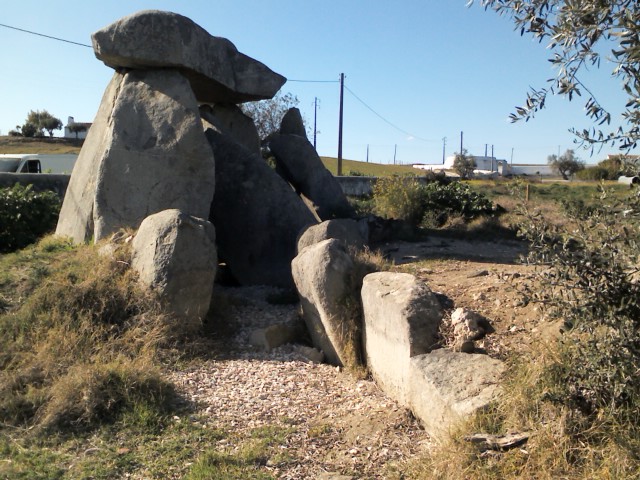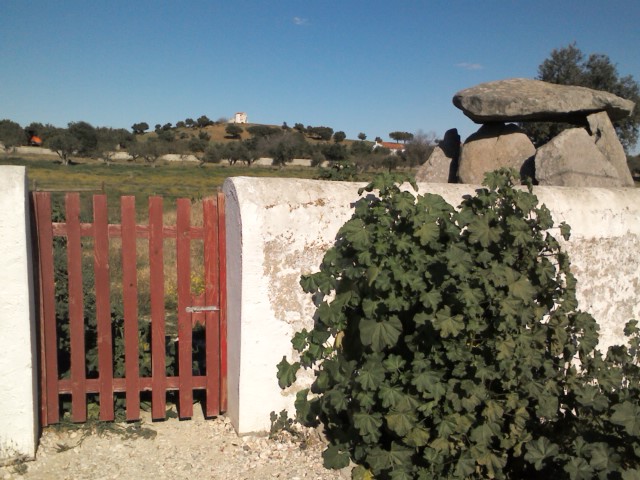
Nota Histórico-Artistica
Classificada como "Monumento Nacional" em 1910, a Anta da Vidigueira foi erguida entre o IV milénio a. C. e o III milénio a. C de modo relativamente isolado numa planície junto à Ribeira do Freixo, enquadrando-se cronologicamente no entendimento generalizado de "Megalitismo eborense", cujo exemplar mais notável é geralmente atribuído à Anta Grande da Comenda da Igreja, localizada em Montemor-o-Novo.
Bastante bem conservada no seu conjunto, remanescem in situ da primitiva estrutura megalítica sete dos esteios graníticos que comporiam originalmente a respectiva câmara sepulcral de planta poligonal centralizada, bem como a correspondente laje de cobertura - ou "chapéu" -, apesar de se encontrar fracturada. Quanto ao corredor de acesso ao seu interior, são ainda visíveis, de igual modo in situ, quatro dos esteios que o constituíam primitivamente. O efeito visual que o monumento nos transmite de se encontrar aparentemente erguido sobre uma espécie de terreiro decorre, essencialmente, da presença de um dos níveis de construção da mamoa - ou tumulus -, ainda bastante destacável nos seus quase oito metros de diâmetro. [AMartins]
Fonte: Site do Igespar

Historical and Artistic Note
Classified as a "National Monument" in 1910, the Vidigueira Dolmen was erected between the IV millennium A.C. and the III millennium A.C in a relatively isolated position on a plain near the Ribeira do Freixo and it fits chronologically in the general understanding of "Megalithic Évora," whose most notable example is generally attributed to Anta Grande da Comenda da Igreja, located in Montemor-o-Novo. Fairly well preserved in its entirety, the primitive structure of the seven megalithic granite pillars that compose the original burial chamber of polygonal base still remains in situ, also the cover slab - or "hat" - despite being fractured.
As to the access corridor to the interior, there are still visible, likewise in situ, the four pillars that were there originally. The visual effect that the monument conveys as being built on a elevation is due to the fact that it is standing on the lower level of the original mound - the tumulus - still very clear measuring nearly eight meters in diameter. [AMartins]
Source: Site of the IGESPAR
